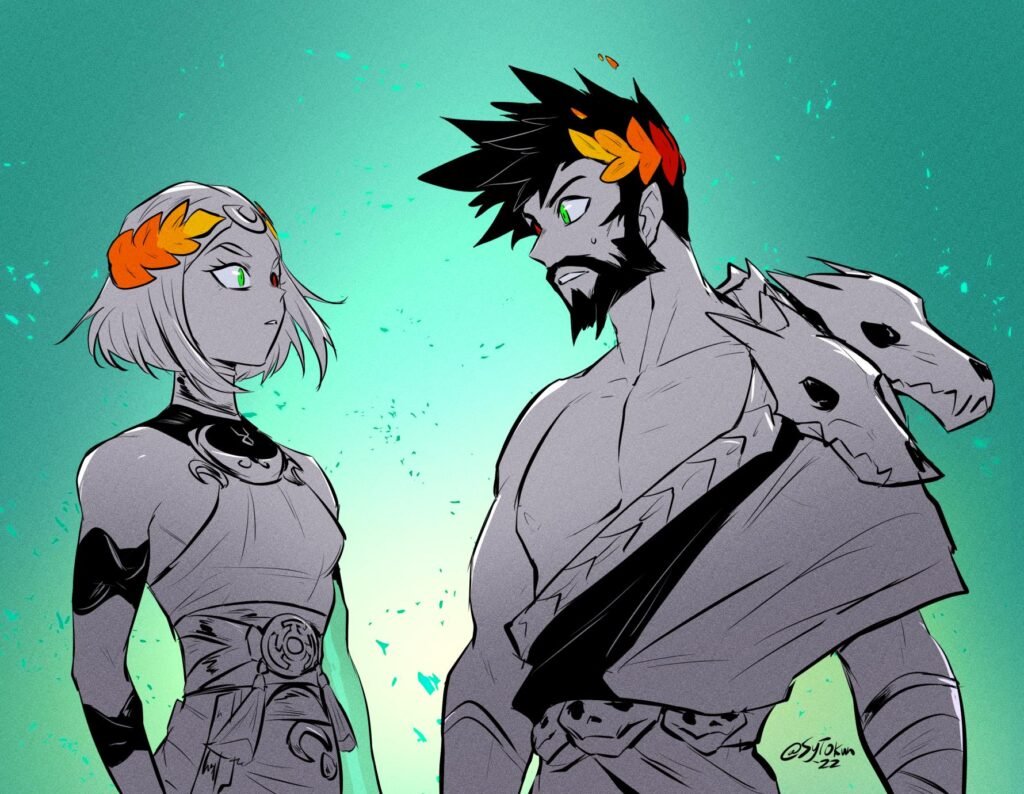
The mythological story of Persephone and Hades has captivated audiences for centuries. It revolves around Persephone, the daughter of Zeus and Demeter, who is kidnapped by Hades, the ruler of the underworld, and becomes his wife and the Queen of the Underworld. This article aims to delve deeper into the story, with a specific focus on the parentage of their two children, Melinoë and Zagreus. While Hades is commonly associated with death and the underworld, rather than fatherhood, there are interesting myths and interpretations that challenge this notion.
Overview of Persephone’s abduction and role as Queen of the Underworld
The story of Persephone’s abduction unfolds as Hades, falling in love with her at first sight, kidnaps her and takes her to the underworld. This act plunges the earth into despair, as Persephone’s grieving mother, Demeter, refuses to let anything grow until her daughter is returned. Eventually, a compromise is reached, allowing Persephone to spend part of the year with her mother on earth and the rest as the Queen of the Underworld by Hades’ side.
During her time as the Queen of the Underworld, Persephone gains power and authority over the souls of the deceased. This association with the underworld and her newfound position as Hades’ wife becomes a crucial element in understanding the potential parentage of her children.
The Children of Persephone and Hades
Within the mythological narrative, two children are attributed to Persephone and Hades: Melinoë and Zagreus. These children have unique origins and significance in Greek mythology.
It is important to note that the traditional association of Hades with death and the underworld, rather than procreation, adds an intriguing layer of complexity to the parentage of Melinoë and Zagreus.
Melinoë: The Chthonic Nymph
Melinoë is depicted as a chthonic nymph or goddess associated with nightmares, madness, and the afterlife. She embodies the darker aspects of the underworld and holds sway over the fears and anxieties of mortals.
According to some interpretations, Melinoë was born at the mouth of the Cocytus River, a river in the underworld. This birthplace strengthens her connection to the realm of the dead and highlights her association with the underworld.
Furthermore, Melinoë is often linked to the moon, which further emphasizes her connection to the night and the mysteries of the afterlife. She is an important figure in Orphic Hymns, where she is revered and invoked alongside other deities.
Zagreus: The Mysterious Son
Zagreus, the son of Zeus and Persephone, holds a significant role in the Orphic Mysteries and the Dionysian cult. He is associated with themes of sacrifice, rebirth, and divine lineage.
The story of Zagreus involves his sacrifice and dismemberment by the Titanes. However, Zeus saves his heart and conceives Dionysus from it. The recovery of Zagreus’ genitals by the Kabeiroi plays a role in the establishment of the Samothrakian Mysteries, further cementing his importance in mystical traditions.
Zagreus’ symbolism extends beyond his mythological narrative. He represents the human desire for transformation, the cyclical nature of life and death, and the potential for divine rebirth.
Zagreus’ Symbolic Themes
Zagreus embodies numerous symbolic themes within the Orphic and Dionysian traditions. His association with sacrifice signifies the necessary process of letting go in order to attain spiritual growth and enlightenment. His rebirth reflects the cyclical nature of existence, where death is a transition into a new form of life.
Additionally, Zagreus’ divine lineage, as the son of Zeus and Persephone, highlights his unique connection to both the heavens and the underworld. This duality mirrors the complex relationship between his parents and adds another layer of depth to his character.